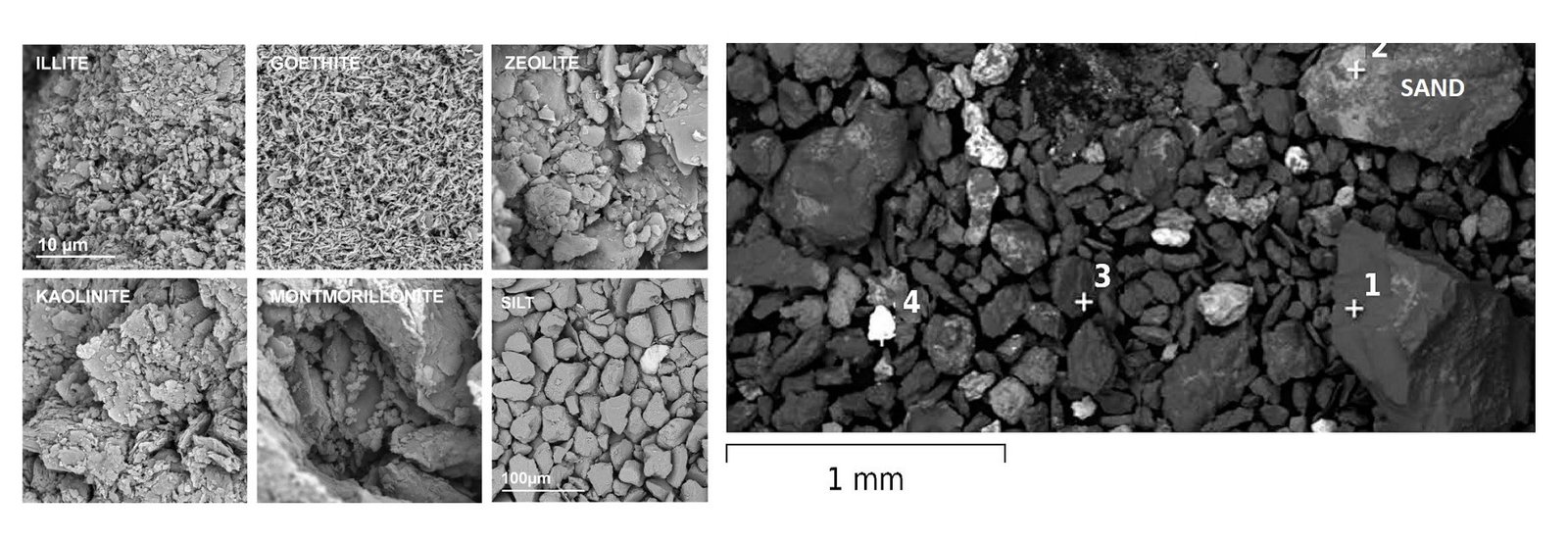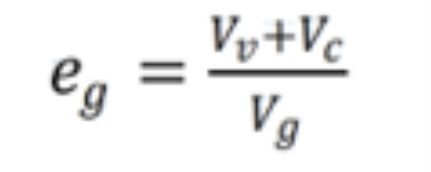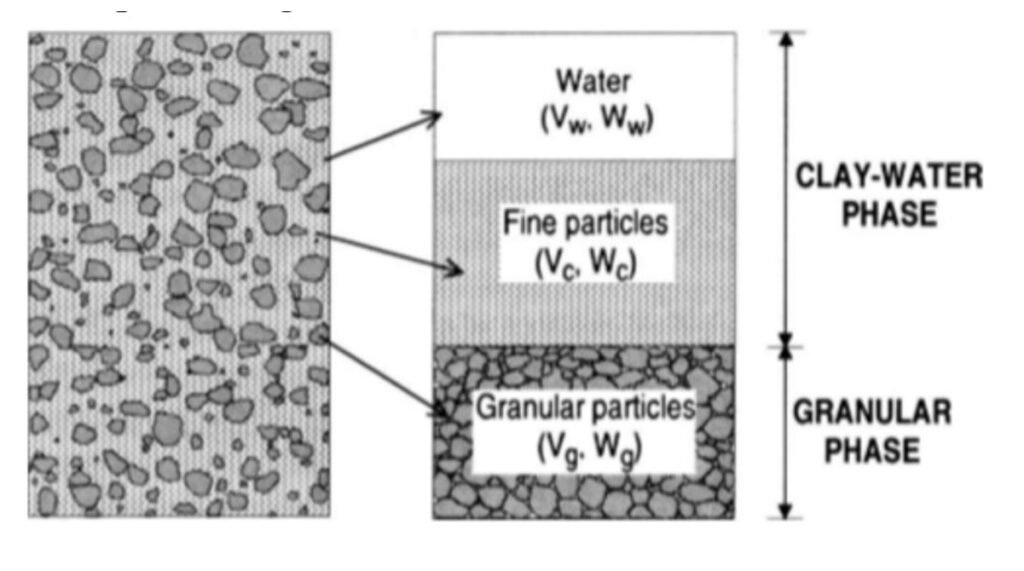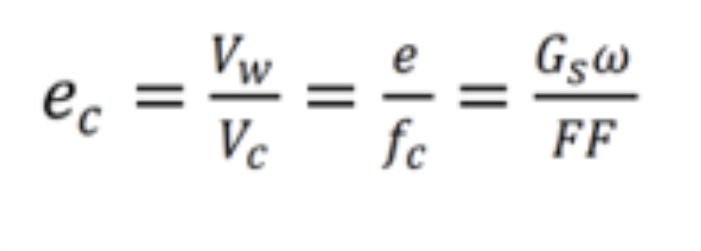

The effect of fine clay fraction on soil behavior
Traditionally, most texts and papers on Soil Mechanics have presented the information clearly divided into two types of materials: sands and clays. However, in practice we often find ourselves in the presence of mixed soils. The following question arises: how to estimate the behavior of these mixed materials? One of the main aspects to take into account when approaching this question is the effect of the fine clay fraction on the material behavior. Do you want to know more? Continue Reading this post...
Content
General considerations about soil behavior
In a previous post we have discussed the nature of soil, differentiating between coarse and fine soils, and presenting some basic notions about their behavior. It would be a good idea to review this information before continuing reading this post. Here is the link: https://geo-webonline.com/en/la-naturaleza-del-suelo/.
The texture of soils, especially of coarse-grained soils, has some relation to their engineering behavior. For fine-grained soils, the presence of water gratley affects their engineering response. Water affects the interaction between mineral grains, and this may affect their plasticity (roughtly defined as the soil´s ability to be molded) and their cohesiveness (its ability to stick togheter). While sands are nonplastic and noncohesive (cohesionless), clays are both plastic and cohesive. Silts fall between clays and sands: they are fine-grained, yet nonplastic and cohesionless (Holtz et al, 2011).

Figure 1 Microscopic images of clay, silt and sand particles (Source: modified from Jozefaciuk et al, 2021 and Akbari & Ahmadi, 2016).
In general, fine particles fill pore spaces between larger particles, control de permeability of soils, determine whether a given loading condition is drained or undrained, and increase the elastic and degradation thershold strain of soils. Furthemore, a relative small percentage of fines can form stable contacts between coarse grains, providing strength and stiffness to the soil. The Uniform Soil Classification System (USCS) recognizes these observations, clearly separates fines from coarse soils, capture the importance of fines in coarse soils, and even adresses whether those fines are of high or low plasticity (Santamarina et al, 2002).
However, it is important to point out that the presence of even a small amount of clay minerals (very small cristaline particles, less than 0.002 mm in size, very active electrochemically) can markedly affect the engineering properties of soil mass. It was recognized that as the amount of clay increases, the behavior of the soil is increasingly governed by the properties of the clay (Holtz et al, 2011; Mitchell, 1976; Monkul & Ozden, 2007). In that way, as a complement of the information provided by the application of the USCS, understanding the effect of the presence ofclay minerals is fundamental to understanding soil behavior.
The effect of fine clay fraction on soil behavior
Firstly, it is important to mention that such soils which behavior is strongly affected by the presence of clay minerals, for simplicity are usually called clays. However, we really mean soils that contain enough clay minerals to affect their engineering behavior. This simplification must be understood, in order to avoid confusion.
The influence of the presence of clay minerals in the soil mass behavior, was extensively studied by several authors in the last four decades. Among the works that I consider most relevant, the following should be highlighted: 1) Lupini et al (1981), who mentioned that residual shear behavior changes significantly as the clay content of cohesive soils increases and a change in a shearing mechanism occurs; and 2) Skempton (1985), who mentioned that if the clay fraction is less than 25%, the soil behaves much like a coarse soil (sand or silt).
In order to explain the influence of the clay fraction on soil behavior, the two-phases model proposed by Mitchell (1976) could be considered. According to such model, the void ratio of the granular phase (eg) can be defined as the ratio of volume of the intergranular voids to the volume of granular solids:

Where Vv, Vc and Vg are the volume of voids, clay particles and coarse particles (silts, sands or gravels), respectively. Hence, Vv + Vc is the volume of the intergranular spaces. It is assumed in that model that contribution of fines (clay particles) in sustaining the internal forces is secondary if the amount of fines stays within a certain margin. Instead, the coarser grain matrix is dominant in the transfer of contact friction forces (Biscontin et al, 2007). Following the two-phases model, saturated soils containing a mix of cohesive and granular soils can be idealized as a combination of the two phases: (1) the clay-water phase, referred as the clay matrix; and (2) the granular phase. Figure 2 illustrates the model.

Figure 2 Two-phases conceptual model (Source: modified from Biscontin et al, 2007).
For most practical purposes, Gc ≈ Gg = Gs, and the volumetric clay fraction fc can be approximated by the gravimetric clay fraction FF. The void ratios of the clay-water and granular phases, ec and eg respectivaly, can be determined from the overall void ratio e and the volumetric clay-fraction, according to the following expressions:


From the last expression, if eg ≥ 1, that means that the clay-water phase is greater than the granular phase. In these conditions, the coarser grains behave as rigid inclusions in the clay-water phase, and provide insignificant contribution to the overall soil behavior, which is only controlled by the clay matrix. Such behavior could be defined as clay-like behavior. On the other hand, if the saturated clay fraction is small, the coarser grains are in mutual contact, and the clay matrix is interlocked in the voids of the granular skeleton. In this case, the overall soil behavior is controlled by the granular phase alone, and could be defined as sand-like behavior.
Some practical recommendations to be applied on geotechnical projects
Fig. 3 shows relationships between eg, ec, ω, and FF. The figure includes information on samples published in the literature (Lupini et al, 1981; Monkul & Ozden, 2007; Biscontin et al, 2007). According to this data, it is evident that samples with higher contents of coarse grains present, in general, eg 1, which could be considered as clay-like behavior.

Figure 3 Relationships between eg, ec, ω and FF (Source: modified from Lupinie et al, 1981 by Boiero, 2021).
According to the above, from the practical point of view it can be established that for FF equal or greater than 20%, the soils will present a clay-like behavior, while for FF less than 20% the soils will present a sand-like behavior. This limit is generally consistent with what has been published in the literature regarding the influence of clay particles on soil behavior.
Considering the information presented above, it is evident the need to consider the expected behavior of the soil in order to carry out an adequate geotechnical characterization. Such consideration complements the information obtained from the soil classification according to the USCS, particularly in relation to the effect of clay particles on soil behaviour.
References
- Akbari, N. & Ahmadi, M. (2016) “Effect of Fines Type and Content of Sand on Correlation Between Shear Wave Velocity and Liquefaction Resistance”. Geotechnical and Geological Engineering,volume 34, pages1857–1876. DOI:1007/s10706-016-9995-8.
- Boiero, A. (2021) “Development of a Rational Methodology for Soil Geotechnical Characterization”. 6TH International Conference on Geotechnical and Geophysical Site Characterization (ISC´6). Paper ID: ISC2020-12. Available at http://isc6.org/images/Cikkek/Sessions/ISC2020-12.pdf. Budapest, Hungary.
- Holtz, R.; Kovacs, W. & Sheahan, T. (2011) “An Introduction to Geotechnical Engineering”. Second Edition. Prentice Hall. New Jersey, USA.
- Jozefaciuk, G.; Skic, K.; Adamczuk, A.; Boguta, P.; Lamorski, K. (2021) “Structure and Strength of Artificial Soils Containing Monomineral Clay Fractions”. Materials, 14, 4688. https://doi.org/10.3390/ma14164688.
- Lupini, J., Skinner, A. & Vaughan, P. (19818) “The Drained Residual Strength of Cohesive Soils”, Geotechnique, 31, pp. 181-212.
- Mitchell, J. (1976) “Fundamentals of Soil Behavior”, 1st ed., John Wiley & Sons, Inc., New York, USA.
- Monkul, M.& Ozden, G. (2007) “Compressional Behavior of Clayey Sand and Transition Fines Content”, Engineering Geology, 89, pp. 195-205, 2007.
- Santamarina, C., Klein, K., Wang, Y., Prencke, E. (2002) “Specific Surface: Determination and Relevance”. DOI: 10.1139/T01-077. NRC. Canada.
- Santamarina, C., Narsilio, G. (2008) “Clasificación de Suelos: Fundamento Físico, Prácticas Actuales y Recomendaciones”. Conferencia 50 Aniversario Sociedad Venezolana de Geotecnia. Caracas, Venezuela.
- Skempton, A. (1985) “Residual Strength of Clays in Landslides, Folded Strata and the Laboratory”, Geotechnique, 35, pp. 3-18.